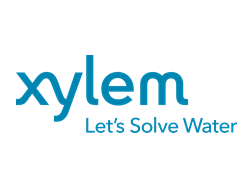Stopping Sewage Spills Before They Happen.
How could we increase our resilience to reduce pollution incidents. Could we act not just quickly but ahead of time, to stop spills before they start?
Join us for our Innovation Sprint focused on tackling pollution from wastewater assets. Wastewater discharges caused by blockages, equipment failures, or extreme weather can impact the environment. Northumbrian Water seeks bold, practical solutions to reduce pollution and enhance system resilience. This sprint will address reducing pollution incidents through smarter, integrated operational decision-making. It will explore innovative technologies, new ways of working, and predictive data solutions to prevent discharges before they occur. The goal is to develop practical tools that fit into operational business as usual and help prevent pollution. Shape the future of clean, sustainable wastewater management with us.
The Challenge
Pollution events on wastewater assets can be caused by blockages, equipment failures, or extreme weather — and they have the potential to impact the environment as well as incur financial penalties. Operators need practical, scalable solutions that strengthen resilience across people, processes, and systems. With increased monitoring, greater connectivity, and rising regulatory pressure, there is an urgent need to turn insight into action — and design systems that help prevent pollution before it starts.
Proposal
Over four days, we’ll collaborate to design practical, forward-thinking solutions that help prevent pollution before it happens. Together, we will:
- Build a shared understanding of how pollution incidents occur — exploring system complexity, environmental triggers, and operational constraints.
- Investigate practical ways to act earlier — using predictive insights, smart sensor data, and improved situational awareness.
- Explore hardware innovations such as intelligent pumping, storage options, flow control systems, alternative power or power-resilient infrastructure, sensor-enabled diversions and local alarms
- Design solutions, with focus on hardware, automation logic, operator workflows, or a combination of them all.
- Create concepts that fit into operational business-as-usual, supporting faster, more informed decisions in control rooms and the field.
- Showcase our outputs to operational teams, innovation leads, and regulators — laying the groundwork for real-world trials or deployments.
The sprint will bring together people from across the water sector to collaborate in mixed teams, combining deep operational knowledge with fresh thinking in engineering, software, and data. The setting will be hands-on and informal, with plenty of whiteboards, sticky notes, and tech demos to inspire action.
What Will We Do?
- Map how pollution incidents currently unfold across wastewater pumping station and treatment works
- Identify data sources and signals that could enable earlier interventions
- Explore opportunities for smarter, more connected equipment — including intelligent pumps, storage, diversion systems, and power backups
- Design solutions that integrate hardware, data, automation logic, and human expertise
- Share final outputs in the form of solution maps and deployment strategies, ready for feedback and potential piloting
Target Outcomes
- 6 to 8 fully developed solutions to reduce wastewater pollution events
- A prioritised shortlist of the most practical near-term interventions across hardware, software, and control logic
- Clear integration strategies for how solutions can be embedded into operational business as usual, including control rooms and operational decision-making
- Shared understanding of how cross-functional technologies (power resilience, new technologies, predictive control, smart sensors) can support resilience
Target Audience
This sprint is aimed at:
- Wastewater operations teams
- Engineers and specialists working in smart assets, pumping, and instrumentation
- Digital operations teams and control room practitioners
- Data scientists, modellers, and control system designers
- Technology providers, innovation leads, and strategic partners across the industry
| Registration has now closed |

